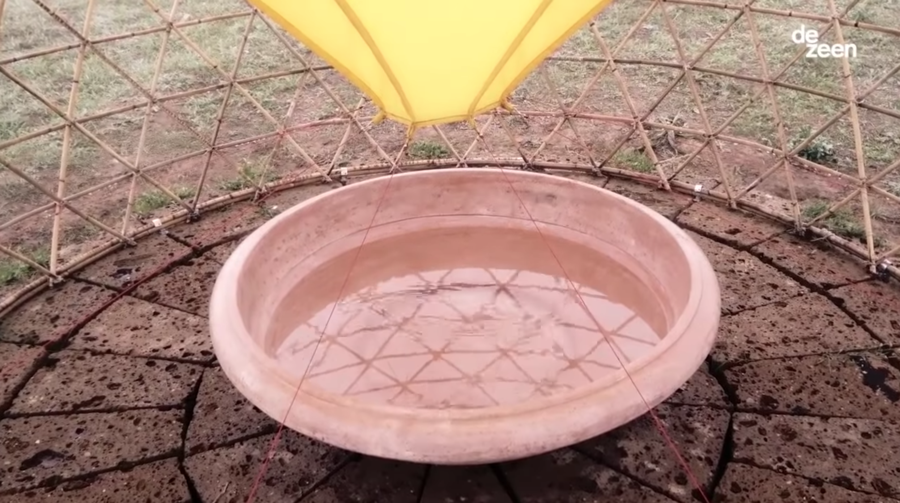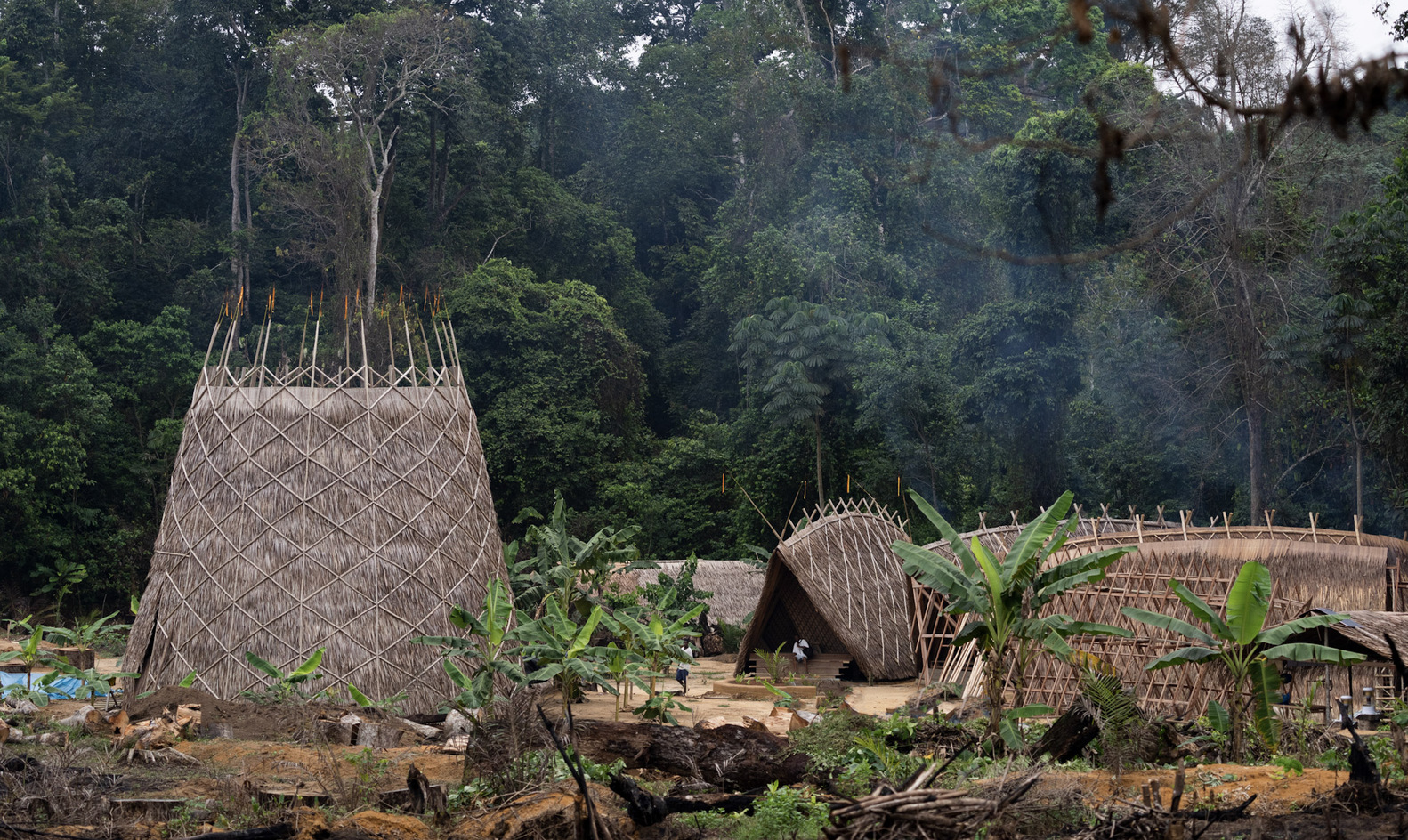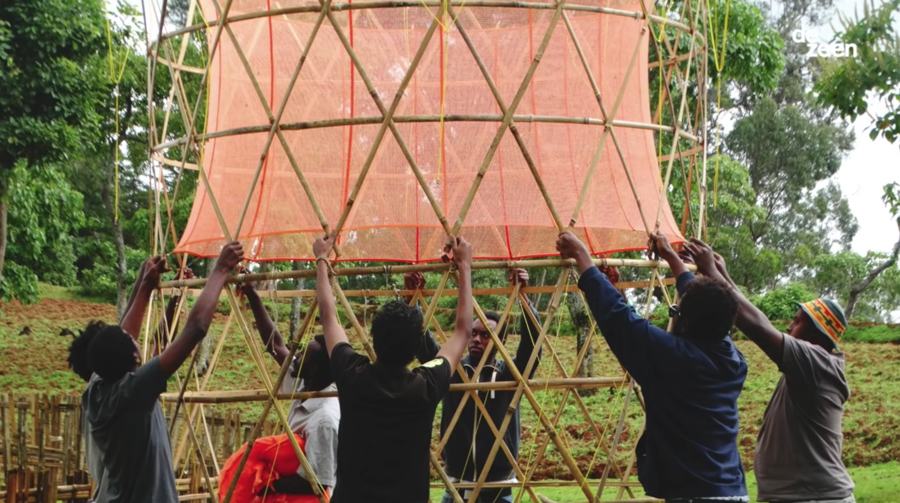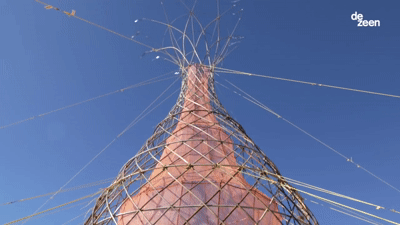Fog catchers that extend into the sky, Warka Water towers harvest local potable water for off-the-grid and drought-impacted communities.
Designed by architects Atruio Vittori and Andreas Vogler, the water collecting towers were conceived to be constructed with indigenous techniques and local natural materials. Computer-generated structural designs are also open-source so that communities around the globe can learn how to build them, and can adapt the designs for their specific needs.
The first Warka tower was built in Dorze, Ethiopia. In some parts of Ethiopia, Smithsonian Magazine notes, “finding potable water is a six-hour journey.” Vittori shares more in the 2016 Dezeen Futuremakers video above:
“The idea is to have a structure simple to construct on-site. The entire tower is very light, it’s almost 80 kilograms, and it’s 12 meters high, so that was the big challenge—how to make it possible to build without scaffolding, without machinery, only by construction by hand.”
In 2022, the team is building a sustainable, community-driven Warka village and cultural center in Mvoumagomi, Cameroon. Via Designboom in 2020:
“The project, which has been under construction in the congo basin for 18 months — the largest tropical rainforest in the world — will eventually form a community for local artisans, serving as an example of how to live with nature. The village comprises seven ‘warka houses’ inspired by the region’s vernacular dwellings; two ‘warka towers’ designed to collect and harvest potable water from the air; ‘warka santiation’ composting toilets that operate without flushing water; a ‘warka pavilion’; and a modular edible ‘warka garden’ that provides food for residents.”
More from WarkaWater.org:
“The name ‘Warka’ comes from the Warka Tree (Ficus vasta), which is a wild large fig tree, endemic to Ethiopia and Yemen. It has an important symbolic value, it is the center of the local community, fundamental for the local ecosystem by providing Nutrition (fig fruits are edible eaten by people but also sheep, goats, monkeys, and birds.), Health (the leaves are used in traditional medicine), Shade (micro-climate formed under the tree), and offering a gathering place…”
“’Our work finds inspiration from nature. Like the Warka tree, we aim to serve the physical and spiritual needs of the community. Insects, animals, and plants develop specific strategies to live in a specific environment. Some of them are capable of collecting water from the air and to and store it to survive in the most hostile environments on earth. We also study the local culture, the craftsmanship and construction techniques, vernacular architecture, and ancient, forgotten traditions,’ said Arturo Vittori.”
Watch these related videos next:
• Catching fog to help combat Peru’s water shortage
• How are scientists harvesting water from thin air?
• Can Namib Desert beetles help us solve our drought problems?
• Rattlesnakes’ scales help them sip rainwater from their bodies
• Why is water one of the weirdest things in the universe?
• The Basics of Freshwater + Water, Water, Everywhere?
Curated, kid-friendly, independently-published. Support this mission by becoming a sustaining member today.







